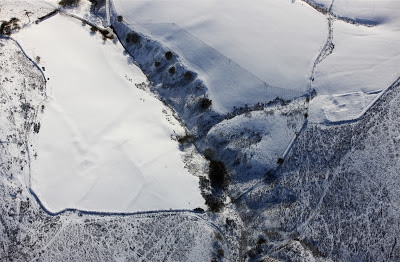 |
| Glamorgan Early Castles |
In its first century, the Royal Commission has produced more than 55 major publications. These have already made an enormous contribution to the understanding of the archaeological, built and maritime heritage of Wales, and many more books are in the pipeline. All of the publications are available in public and institutional libraries throughout Wales as well as in the Commission’s library and archive search room in Aberystwyth. Books still available for sale are listed in the
Bookshop.
This title is now out of print, but is available as an eBook.
Buy eBook Now Glamorgan: Early Castles at Google Play.
Glamorgan Early Castles
Fifty-seven castles founded in Glamorgan by 1217 are here described.
These include mottes. castle-ringworks, and presumed Welsh earthworks,
all without masonry, as well as sixteen masonry castles ranging from
well known sites at Cardiff, Coity, and Ogmore, to the Welsh stone
castle now identified at Plas Baglan. Later defensive monuments will be
described in part lb.
Published 1991.
Content
Map of sites treated in this Part (la) of Volume IIII
Chairman's Preface
Report, with a List of Monuments selected by the Commissioners
as most worthy of preservation
List of Commissioners and Staff
Authorship and Compilation
Presentation of Material
Introductory Survey
I The Division of the material; Parts la and lb Explained
II The Geographical Background
III The Historical Background (1072-1217)
IV The Early Castles Discussed
Inventory of the Early Castles
Section MO: Mottes without Masonry
Section CR: Castle-Ringworks without Masonry
Section UW: Unclassified, probably Welsh Castles
Section VE: Vanished Early Castles
Section MM: Masonry Castles Built Over Mottes
Section MR: Masonry Castles built over Castle-ringworks
Section EM: Early Masonry Castles
Abbreviated Titles of References
Map and List of Ecclesiastical Parishes, with incidence of Monuments
Map and List of Civil Parishes, with incidence of Monuments
Index of National Grid References for sites treated in Part la
Glossary: General
Glossary: Welsh Terms and Place-name Elements
List of Figures, including maps and photographs
General Index
Alphabetical List of sites treated in Part 1 b of Volume III
Map of sites treated in Part lb of Volume III
Related Publication Links:
Gwerthu Llyfrau
Book Sales
Tanysgrifiwch i Newyddion Treftadaeth Cymru a chofrestrwch ar gyfer yr RSS porthiant llawn: cliciwch y botwm RSS hwn

a
thanysgrifiwch!
Rydym hefyd ar gael ar:



Twitter Hashtag: #RCAHMWales


 a thanysgrifiwch!
a thanysgrifiwch!


















